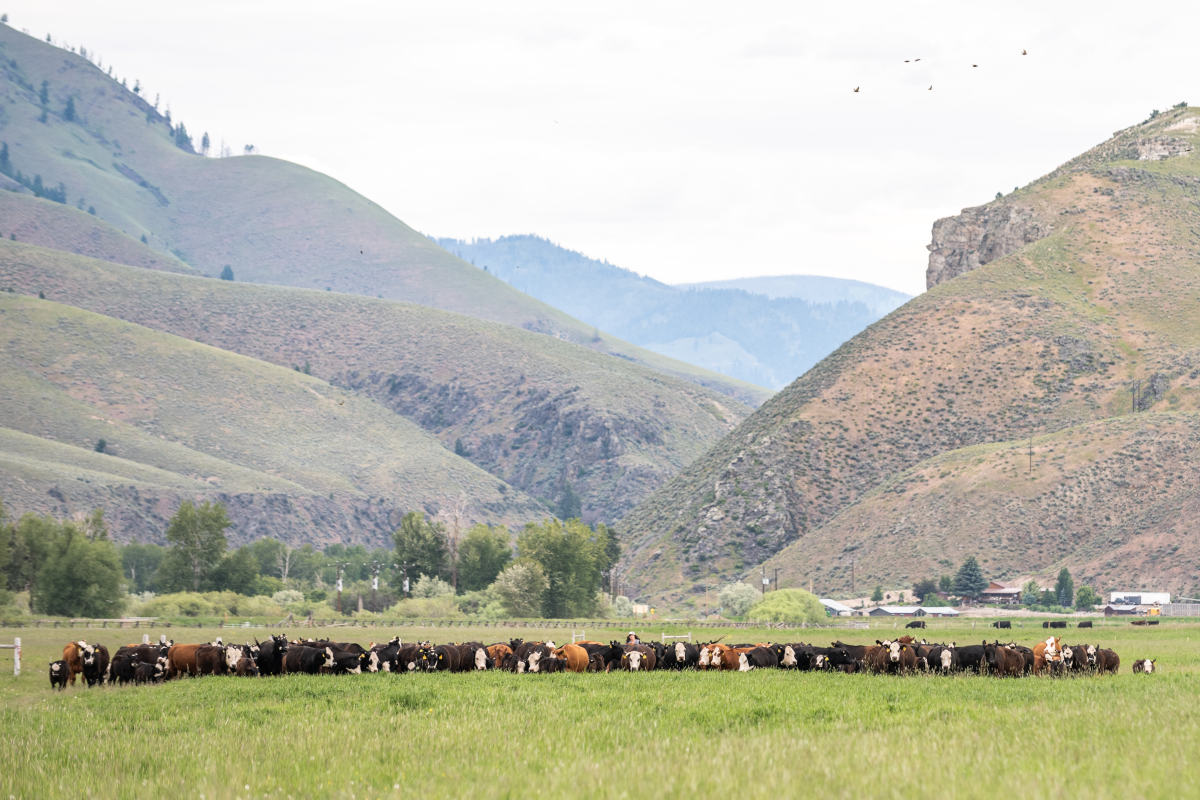Kickstarting a Fence
Researchers Designing Rugged Virtual Fence Tech for Sustainable Animal Management
Ranches across the American West could make their grazing practices more sustainable through a virtual fence system being developed through a joint University of Idaho project.
Newly awarded federal funding in 2022 kickstarted a four-year field project for researchers at U of I and Washington State University to test the safety and efficacy of a prototype virtual fence system that uses novel features to manage cows, sheep and other grazing livestock with minimal ecological footprint.
Livestock and well-managed rangeland require barriers to divide pastures and manage grazing. But physical barriers — expensive to construct, alter and maintain — disrupt wildlife migration and fragment habitats. The new technology under development aims to provide a low-cost tool for sustainable livestock and land management that performs reliably in mountainous western states, where existing virtual systems struggle to provide reliable GPS data.

“As wildlife habitat becomes increasingly fragmented and recreational activities on rangelands continue to grow, maintaining unobstructed corridors for movement of wildlife and humans is critical,” said Karen Launchbaugh, director of the U of I Rangeland Center. “Advances in wire fence designs have reduced issues for wildlife, but wire fences continue to disrupt wildlife movement.”
As wildlife habitat becomes increasingly fragmented and recreational activities on rangelands continue to grow, maintaining unobstructed corridors for movement of wildlife and humans is critical.Karen Launchbaugh, director of the U of I Rangeland Center
Commercial virtual fence systems deliver an electric shock to a cow’s neck when the animal approaches a virtual barrier. These systems eliminate the need for wire fencing by relying on GPS technology but require subscriptions and costly on-the-ground signal towers. Virtual fence systems simplify moving fence locations, but they require routine updates, battery replacement and recharging. The equipment also costs up to several hundred dollars per cow.
The new virtual fence system being designed by U of I and WSU researchers uses proximity sensing technology that functions in mountainous terrain and shocks the ear, rather than the neck. Both changes can make the system cheaper, less energy demanding and more durable.
The Rangeland Center, leading U of I’s project efforts, partners with livestock producers and land managers to identify critical issues affecting rangelands to guide and inform research. The project was awarded a $1 million grant from the USDA National Institute of Food and Agriculture last month.
Karen Launchbaugh, Ph.D.
Professor of Rangeland Ecology
This project was funded by the USDA National Institute of Food and Agriculture under award 2022-68017-37318. The total project funding is $981,000, of which 100% is the federal share.
Written by University of Idaho Communications.
Photos by University Visual Productions.
Published in April 2023.








